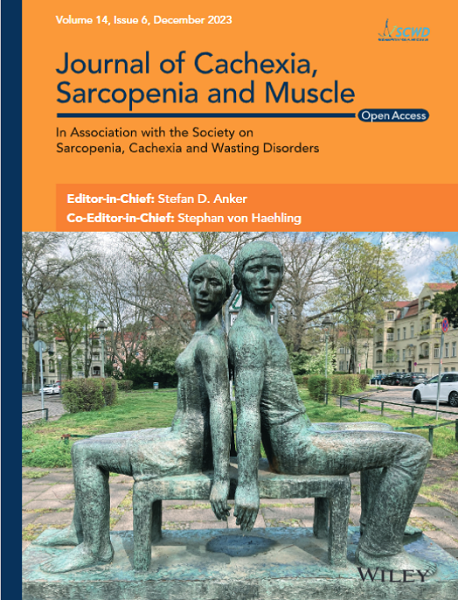Keratocan Improves Muscle Wasting in Sarcopenia by Promoting Skeletal Muscle Development and Fast-Twitch Fibre Synthesis
Abstract
Background
Osteosarcopenia refers to the co-occurrence of osteoporosis and sarcopenia, which are characterized by progressive bone density and muscle mass loss, respectively. Muscle and bone are regulated by many common genes and pathways, enabling potential co-treatment. Because keratocan protects against osteoporosis, we hypothesized it may also protect against sarcopenia, implying a new co-intervention target. This study aimed to elucidate the role and molecular mechanisms of keratocan in skeletal muscle.
Methods
We analysed keratocan expression in the muscles of aged mice and patients with osteosarcopenia and during the differentiation of C2C12 myoblasts. The regulatory role of keratocan was assessed by knocking down or overexpressing keratocan in C2C12 cells and examining any effects on myogenic proliferation and differentiation. RNA sequencing analysis was also performed on these cells. The relationship between keratocan and enriched signalling pathways was verified using pathway inhibitors or agonists. Finally, adeno-associated virus-9 containing a muscle-specific promoter was injected into SAMP8 senile mice to observe the effects of keratocan overexpression.
Results
Keratocan expression was significantly lower in the skeletal muscles of aging mice (−2.02-fold, p < 0.01) and patients with osteosarcopenia (−1.78-fold, p < 0.001) compared with that in controls. Keratocan overexpression resulted in a significant increase in the proliferation indices CCND1 (+1.43-fold, p < 0.001), Ki67 (+2.30-fold, p < 0.001) and PCNA (+1.975-fold, p < 0.01) and the differentiation indices MyoD1 (+2.156-fold, p < 0.001), MyoG (+1.52-fold, p < 0.05) and myosin heavy chain (MyHC; +2.849-fold, p < 0.01); conversely, the muscle atrophy indices MuRF-1 (−30%, p < 0.01), atrogin-1 (−87%, p < 0.01) and myostatin (−24%, p < 0.01) were significantly decreased. PI3K/AKT/mTOR was identified as a potential pathway for keratocan regulation in C2C12 cells. PI3K inhibitor LY294002 reversed the promotion of myogenesis by keratocan overexpression, while PI3K activator 740Y-P reversed the inhibitory effect of keratocan knockdown on myogenesis, promoting myofibre development and ameliorating muscle atrophy in SAMP8 aging mice. This was evidenced by increased mean muscle cross-sectional area (+38%, p < 0.0001) and muscle mass (+7%, p < 0.01) and decreased fibrosis (−40%, p < 0.01). Furthermore, keratocan facilitated the conversion of slow-to-fast muscle fibres through the PI3K/AKT/mTOR pathway, characterized by significantly increased grip strength (+42%, p < 0.01) and maximum running speed (+19%, p < 0.001), and decreased fatigue time (+13%, p < 0.05).
Conclusions
Keratocan ameliorates muscle atrophy by activating the PI3K/AKT/mTOR pathway, promoting muscle satellite cell proliferation and myogenic differentiation, and facilitating the conversion of slow-to-fast muscle fibres. Our findings demonstrate the potential of keratocan as a novel therapeutic target for osteosarcopenia.


 求助内容:
求助内容: 应助结果提醒方式:
应助结果提醒方式:


